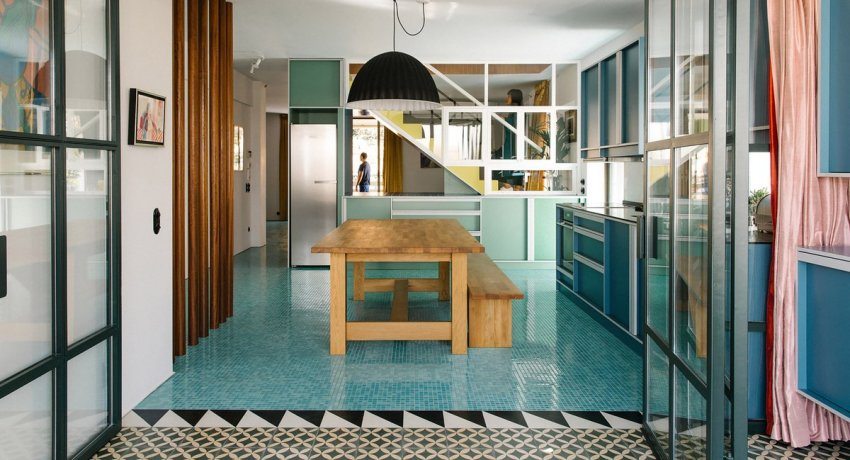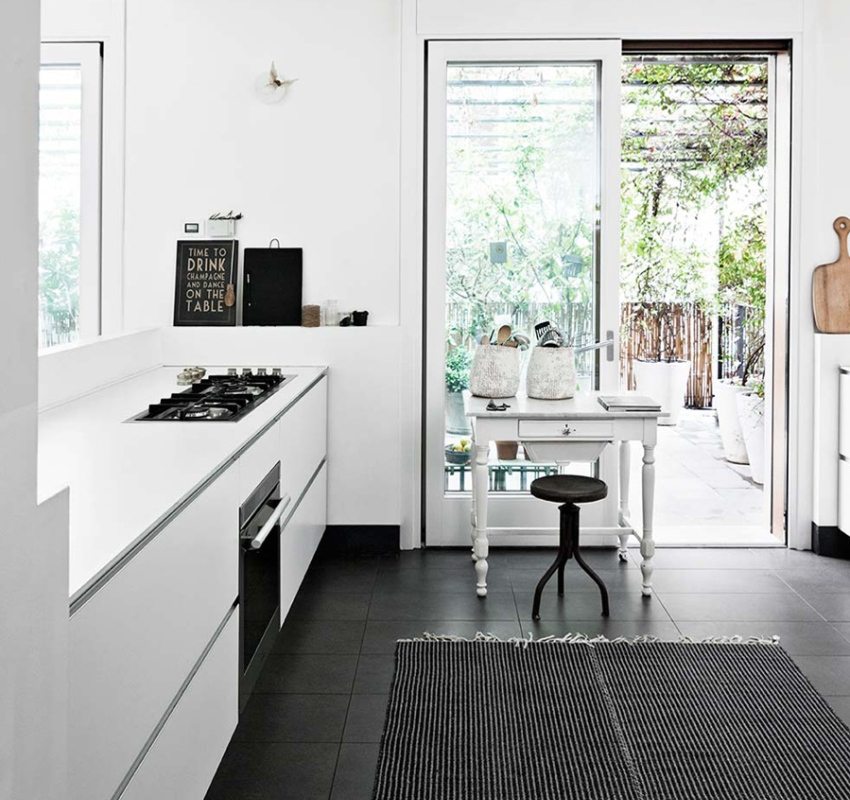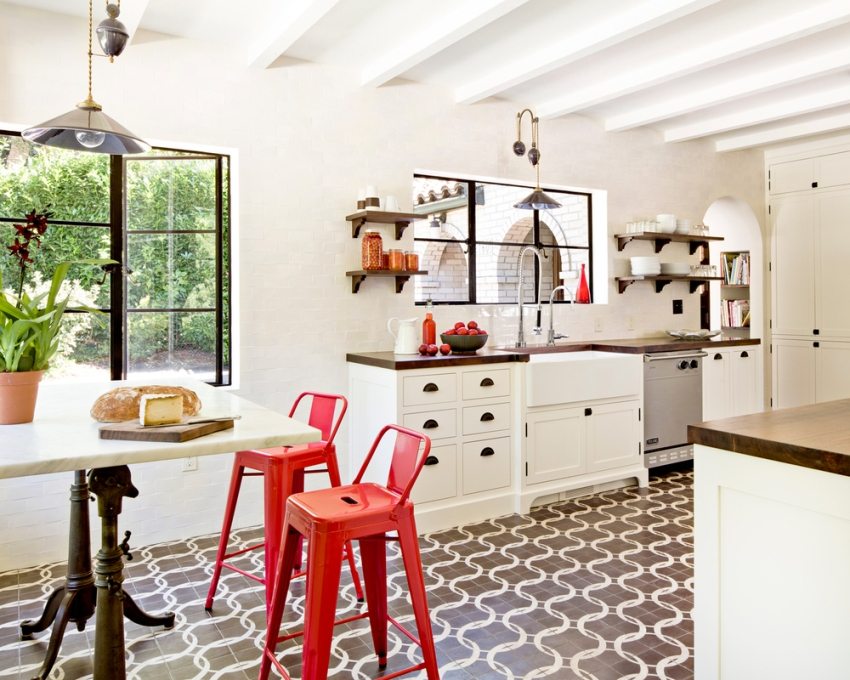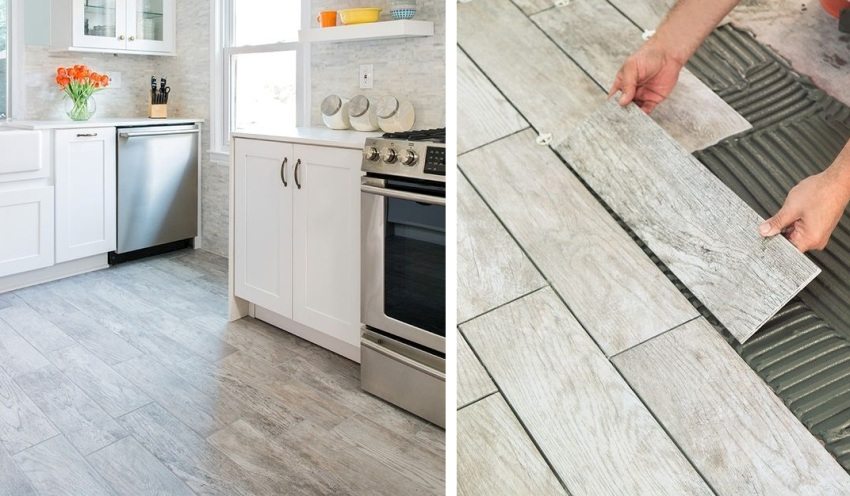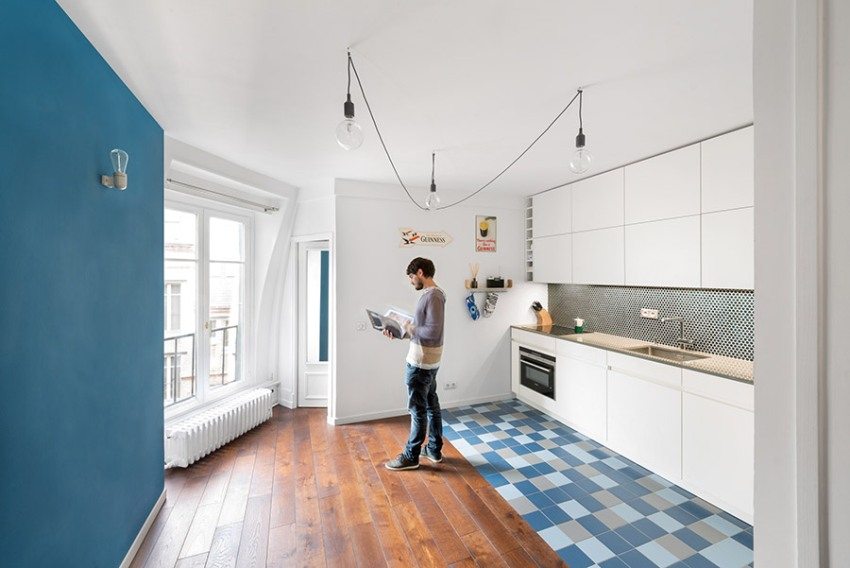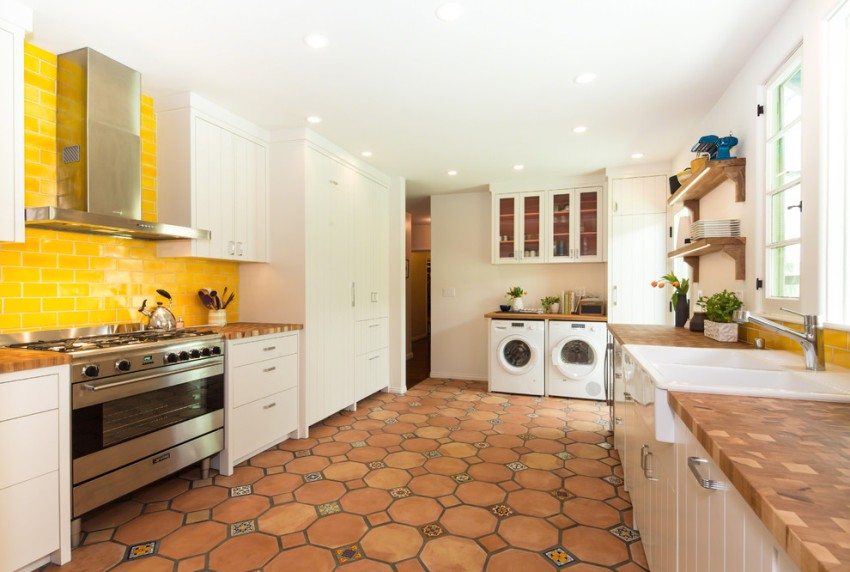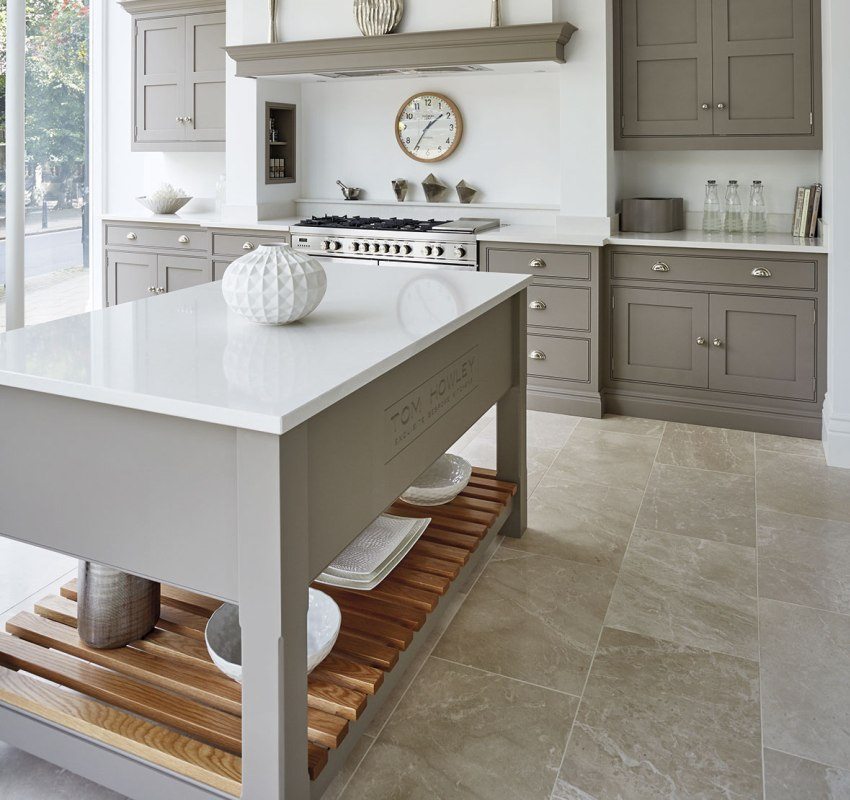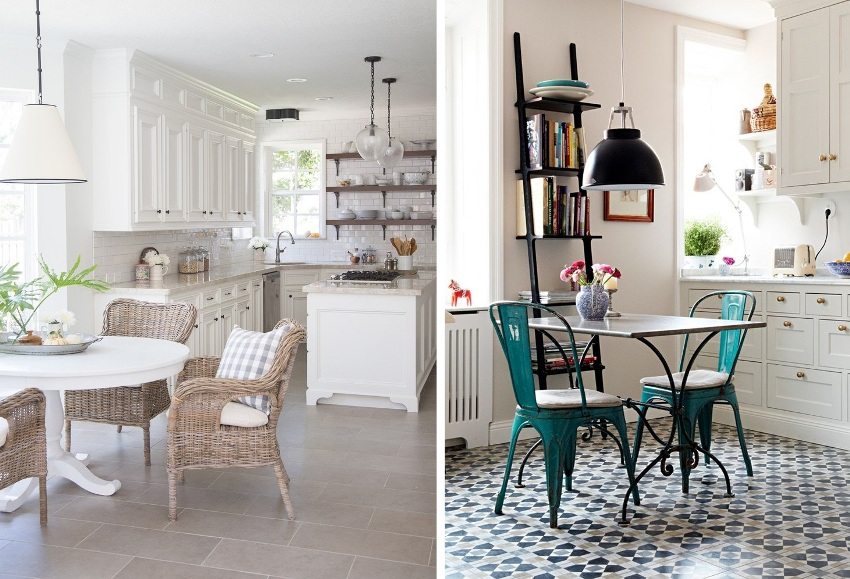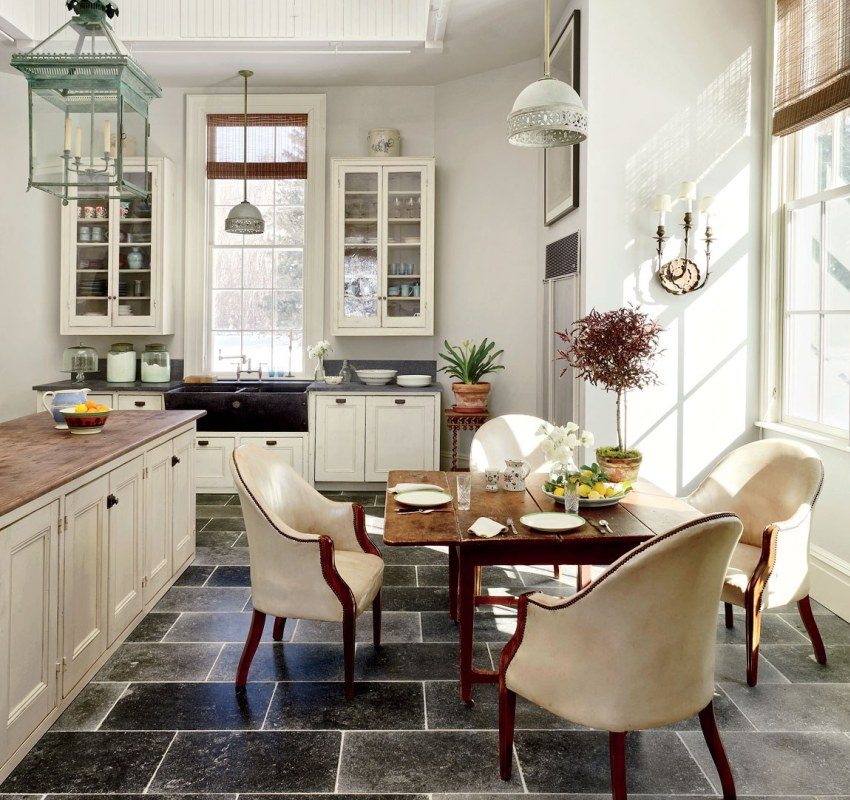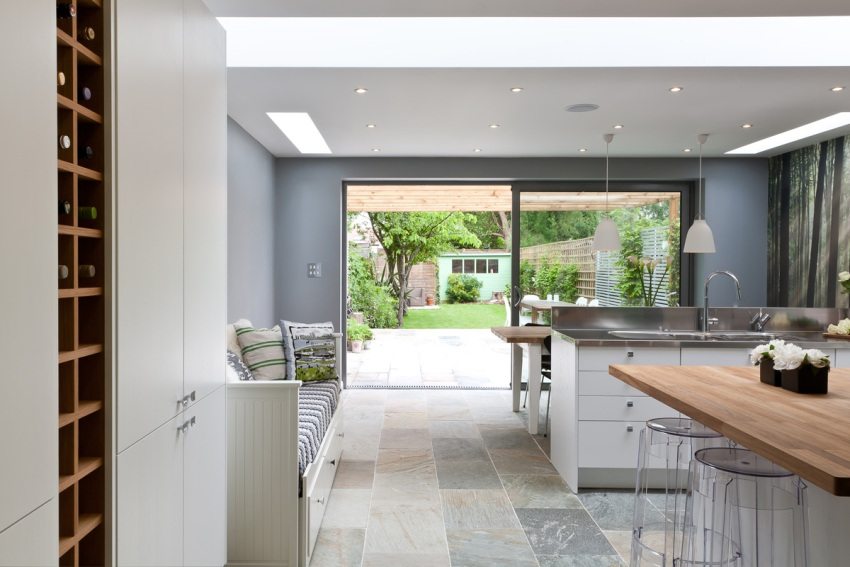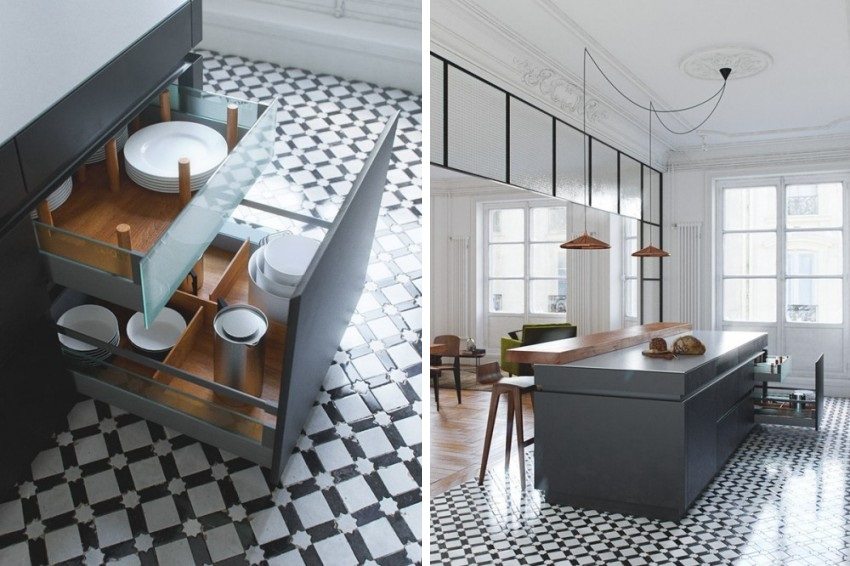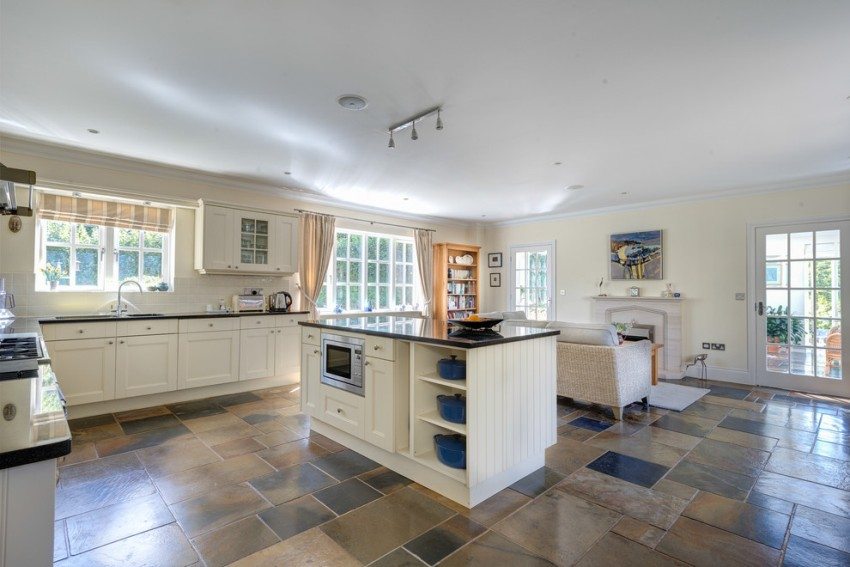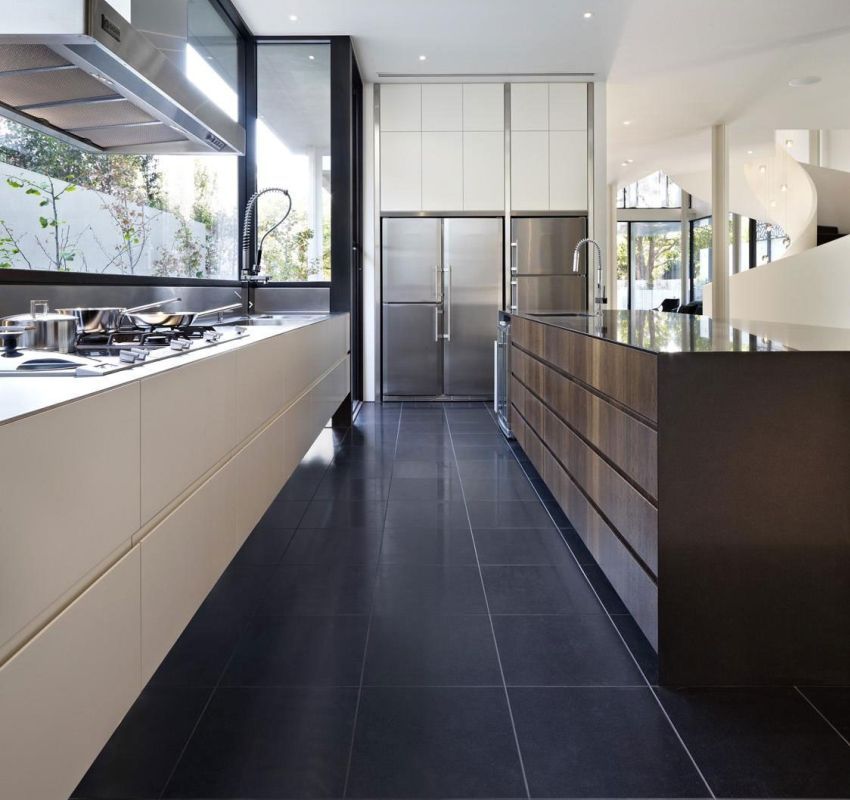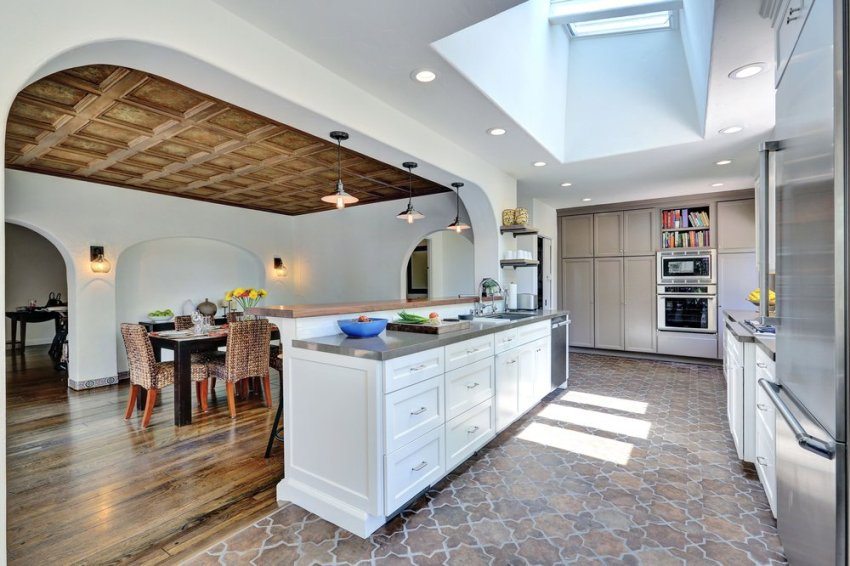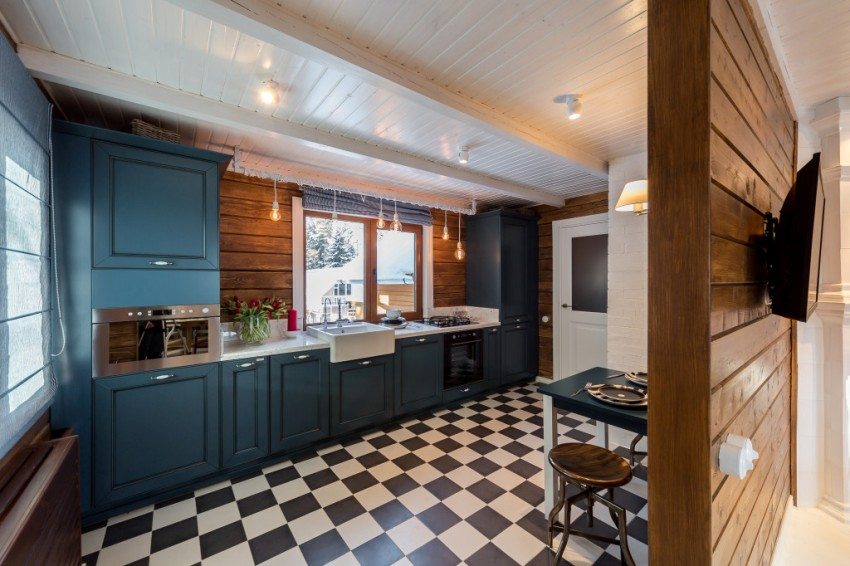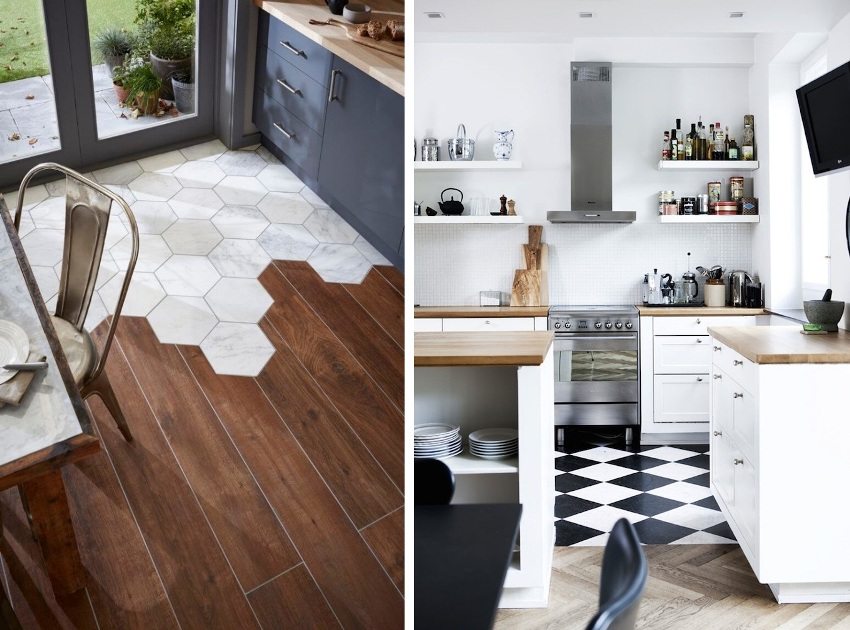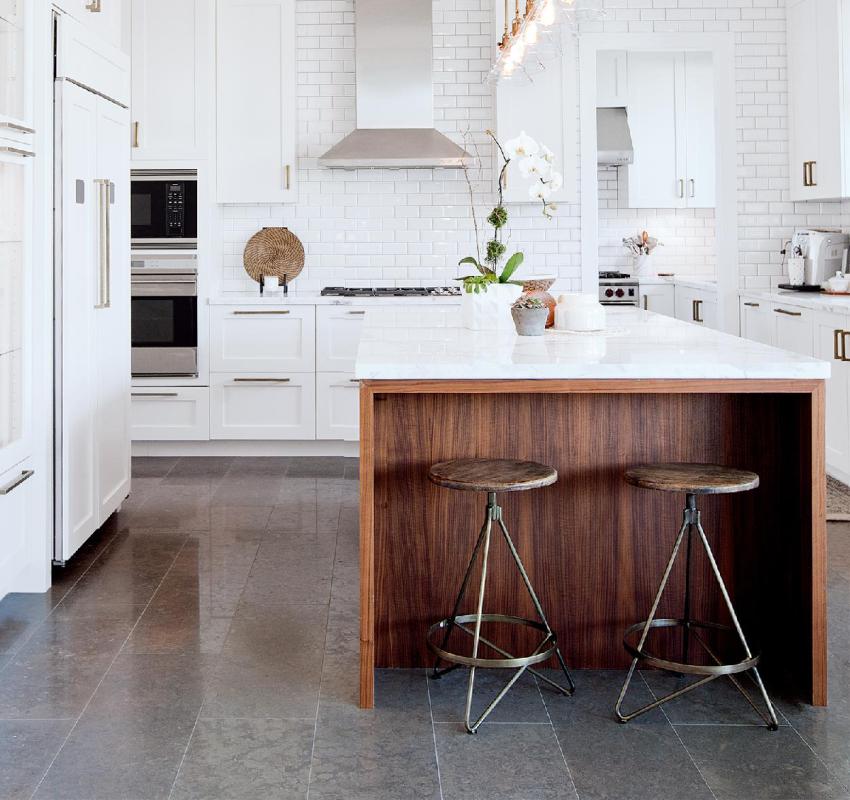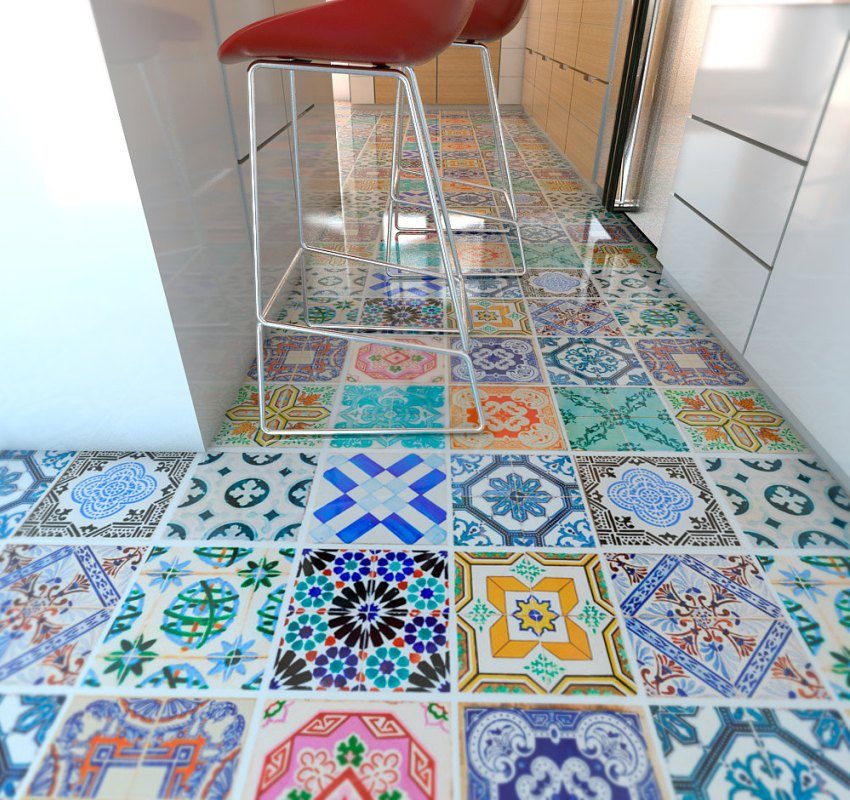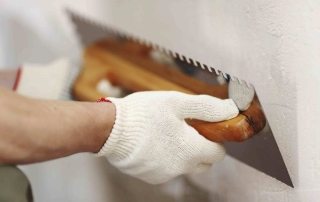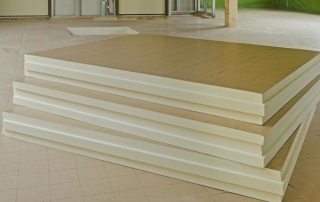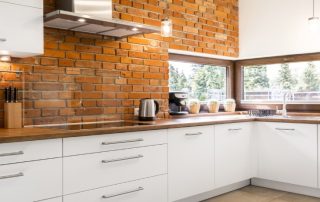The kitchen is the center of the hearth. It's not just the smell of coffee and fresh pastries that creates a sense of coziness here. A stylish interior and, most importantly, practical finishing materials will not be superfluous in this part of the home. The specificity of the operating conditions of kitchen facilities determines the direction of choice of facing not only for furniture surfaces, but also for floors. Strength, durability, ease of maintenance, the possibility of long-term use - these are the main criteria that should be considered. There are many coatings available today that will look good in the kitchen. Linoleum, wooden floors, cork coverings have a beautiful appearance, but they are not very practical for use in the kitchen and are demanding to maintain. Floor tiles for the kitchen will be an excellent modern coating solution. Photos and prices of the main types, as well as an overview of manufacturers will help you make the right choice.
Content [Hide]
Types of floor tiles for the kitchen
The most common types of floor tiles are:
- ceramic tiles are convenient and practical to use. It is the most popular kitchen floor covering. Due to the wide price range, you can choose the appropriate option depending on your financial capabilities;
- porcelain stoneware - more expensive finishing material. This coating is indifferent to temperature changes, has moisture-repellent properties, high wear resistance and strength;
- quartz vinyl floor tiles are an innovation in the world of finishing materials at an affordable price. The main characteristics of this coating are durability and resistance to damage, as well as fireproof and moisture-repellent effect. The vinyl it contains provides softness, flexibility and warmth to this flooring. Ceramics, on the other hand, cannot boast of such properties.
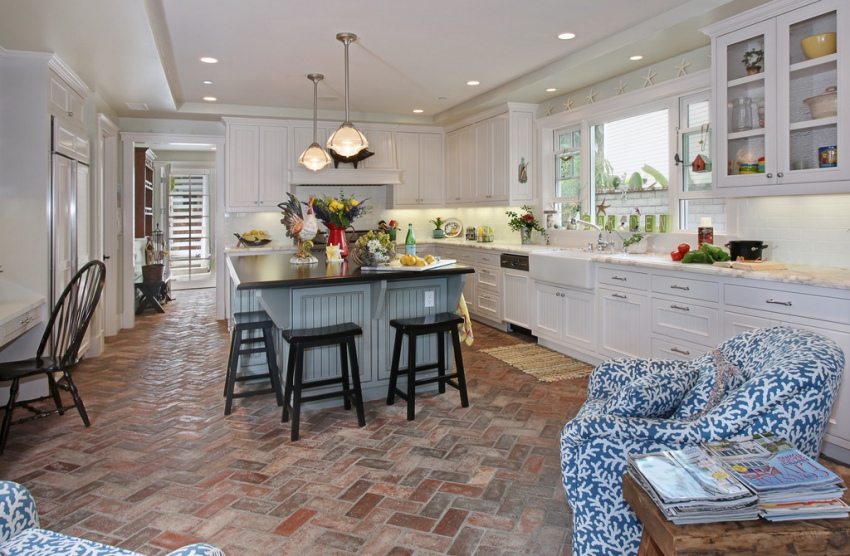
"Herringbone" - popular way of laying floor tiles
These coatings are durable and do not require any special care; they can be easily cleaned from dirt and grease using household chemicals. The assortment is presented in a variety of sizes, colors and textures. There are options for imitating the surface of such natural materials as wood, stone, leather, fabric, metal. Various methods of laying floor tiles for the kitchen (photos of which can be found on the Internet) allow you to divide the kitchen into separate zones. That makes it possible to arrange the floor in the kitchen in versatile design solutions.
Classical ceramics
Various technologies and processes are used to make ceramic tiles.Depending on the manufacturing methods, such types of ceramic facing materials are distinguished: bicottura, monocottura, monoporosis, cotto, clinker, majolica, cottoforte, faience, porcelain stoneware, glazed and unglazed tiles. Of these, the most suitable for covering the floor in the kitchen:
- monocotture. Enamel tiles used in wall and floor cladding;
- monoporosa - glazed tiles, single fired. Its use is allowed for interior decoration, but it is less dense than monocotture;
- cotto - single fired unenamelled tiles. It is made of red clay and looks very beautiful on the floor. A tile for a kitchen made of this material should be chosen for non-intensive use of the room;
- clinker - has a high resistance to mechanical damage and household chemicals, therefore it is widely used for flooring;
- cottoforte - double fired pressed tiles covered with glaze. Its strength allows it to be used as a floor covering;
- unglazed tile consists of a homogeneous material throughout its entire thickness, without a decorative layer, therefore it is characterized by high wear resistance, but a low coefficient of moisture absorption;
- glazed tiles have a decorative glass layer, which is subsequently decorated with a pattern or color scheme.
Ceramic tiles are mainly laid on a cement-sand base. You can leave the old coating only if there are no defects, distortions or voids in it. It depends on the quality base how long the tile flooring will last. Therefore, in order not to pay twice, it is better to make a new screed. For heated coatings, choose a substrate with a high thermal conductivity.
Helpful advice! If there is already a plank surface, which is a pity to remove, cover it with waterproof plywood, treat it with an additional primer and you can lay tiles... A solid wood base is not recommended for use when laying ceramic tiles, since it tends to bend during operation.
Ceramic tiles are durable enough and are not afraid of humidity or temperature changes. This coating is not afraid of water and dirt, drops of fat and household chemicals. Proper care will ensure a decent look for years to come.
Related article:
Floor tiles for the corridor and kitchen: photos, tips for choosing and laying. The best options for finishing the hallway and kitchen. Advantages and disadvantages of tiles. How to choose and lay tiles: photos and tips.
Ceramic granite
Porcelain stoneware is a relatively new expensive finishing material, which is made from a mixture of high quality clay, quartz, feldspar with the addition of natural dyes. Under the influence of high temperature, this mixture turns into a monolithic material, which is characterized by strength and low moisture absorption.
The porcelain stoneware coating is not inferior in its structure and properties to natural stone, therefore it is used to decorate premises both inside and outside. The use of natural materials in its manufacture guarantees the environmental friendliness of this product. The decorative properties of this material are multifaceted.
Using porcelain stoneware as floor tiles for the kitchen (the photo in the interior confirms this) will give the room a rich look. Depending on the style, you can choose a tile with an imitation of a natural stone pattern, a matte, polished or embossed surface, the effect of chips and age-old scuffs.
Quartz vinyl
This is the development of Japanese scientists, which has found its application in construction technologies.The structure of this finishing material is multi-layered. Its basic elements are composed of quartz sand and fiberglass. The top layer with a UV filter has a decorative function on which a photo-printable pattern is applied. A protective layer of polyurethane and polyvinyl chloride gives the material strength and durability. Moisture resistance, fire resistance and sound absorption can also be attributed to the advantages of quartz vinyl flooring.

Quartz vinyl tiles - modern finishing material
Products from this material are made in square or rectangular shape. With the help of photo printing, manufacturers have achieved tremendous results in a variety of designs. Tiles for the kitchen on the floor (photos of quartz-vinyl samples are presented in the manufacturer's catalogs) can be selected in options to imitate any natural material. Or choose bright colors or extravagant patterns.
The deck surface is also available in several versions: smooth or embossed. All this allows you to roam your imaginations and bring to life the most extraordinary design solutions. And the cost of such a finishing material will not hit the pocket, since the price range is very affordable.
Quartz vinyl floor tiles are said to be unhealthy. This public opinion was formed in connection with distrust of chemical names that are unusual for the ear, such as "polyvinyl chloride" and "oil refined product". In fact, PVC products are widely used in all civilized countries. This material can only be hazardous when burned, as this leads to the release of toxic substances. However, like any other item from the usual plastic. Therefore, there are no restrictions on the use of this flooring.
It is interesting! Petroleum jelly and paraffin are also refined products. They are widely used for cosmetic and medical purposes and do not raise doubts about their safety.
Main technical parameters of tiles
Floor tiles for kitchen is produced in a wide range of colors, patterns and textures. As for the technical characteristics, here it is necessary to take into account some parameters established by regulatory documents. They will help you choose the best option for your kitchen:
- bending resistance. Determines the load limit for three points of one tile without breaking it. This value is expressed in N / mm². According to ISO 1054-4, there are such minimum values depending on the tile category (for BIb - 27, for BIIa - 20, for BIIb - 16);
- surface hardness. This indicator will help determine how resistant the tile surface is to mechanical damage. According to EN101 standards, this value is from 1 to 10. The higher this value, the less the tiles are susceptible to damage and scratches. It should be noted that for non-enameled tiles, this norm is not required, since the tile structure is uniform throughout its thickness;
- resistance to abrasion (for unglazed tiles ISO 10545-6) and resistance to abrasion (for enameled tiles - IS010545-7). The norm determines how much the tile is susceptible to wear during operation. For kitchen ceramic tiles in accordance with EN 154, category PEI III (operation with medium abrasive particles) should be selected;
- chemical resistance (ISO 10545-13). Determines the ability of a tile to withstand chemicals at room temperature. The alphabetical classification in descending order is as follows: AA - the product is resistant to chemical influences; A - may have minor changes; B - has average changes in appearance with chemical exposure; C - partially lost its original appearance; D - complete loss of its original appearance;
- slip resistance.This rule is not required, but in the kitchen there is always a risk of slipping on the floor on spilled liquid. Photos of tiles in the kitchen often show a rough surface;
- the size. Most often, tiles of 20x20, 30x30 and 40x40 cm are chosen for the floor. Combined options are also used. Small tiles 10x10 or 15x15 cm are less commonly used for flooring. It looks very organic in such stylistic solutions as Provence or country. Note that floor tiles are thicker and more durable than wall tiles. Its thickness should be between 6.5 and 11 mm;
- color and texture are determined individually, depending on the use of floor tiles for the kitchen. Photos and prices, options for combining textures and shades can be viewed in the catalogs of manufacturers.
Useful advice! When buying tiles in a store, it will not be superfluous to compare the color and tone of all packages or make sure by marking that all tiles are from the same batch. Since different batches of the same collection may differ in these indicators.
Manufacturers usually indicate technical parameters in catalogs or by marking on the packaging. Knowing what type of tiles you intend to put in the kitchen, do not be too lazy to check it for compliance with the specified standards and your kitchen floor will retain its aesthetic appearance for a long time.
Design approach to kitchen flooring
Floor finishing is one of the main decorative elements. When choosing floor tiles, it should be borne in mind that they will be an integral part of the overall ensemble. The color scheme and style of flooring should be chosen based on the interior of the kitchen, its lighting and size. In a dimly lit or small kitchen, light tiled ones look better. floors... A dark color, diluted with light inserts, is suitable for large rooms.
Marble tiles will organically fit into the classic style. In a kitchen with a modern design, a solid color or floor with a neutral pattern will look better. Artificially aged ceramic tiles are perfect for the Provence style.
Various options for imitating natural materials like wood, stone, glass, metal and even reptile skin in floor coverings will also find their application in the design of the kitchen interior. And various shapes, sizes, colors and textures will give designers endless possibilities of using tiles as additional decoration.
Floor tiles for the kitchen: photos and prices, review of manufacturers
The geography of tile production companies is extensive. The most popular are the products of manufacturers from Spain, Italy, Poland, Portugal, China, Turkey and Germany. Also, tile flooring is made in the former CIS countries - Russia, Belarus, Ukraine.
The goods of these manufacturers differ not only in quality, but also in their pricing policy. Therefore, the choice mainly depends on the status and financial capabilities of the consumer.
Consider the approximate prices of tiles for kitchen floors (photos and a detailed price scale can be found in the catalogs of manufacturers or on the websites of stores selling these products).
More budgetary options are Russian manufacturers (Kerama Marazzi, Coliseumgres, Cersanit, Lesselsbergers, Belleza, Uralkeramika, Global Tile, Atlas Concord, Atla Cera). The initial price of products from these manufacturers per square meter ranges from 130 to 850 rubles. Also in demand are the Belarusian tiles of the Keramin company (from 500 rubles per square meter), Ukrainian products of the Kharkov tile factory, InterKerama and Atem (from 600 rubles per m²).
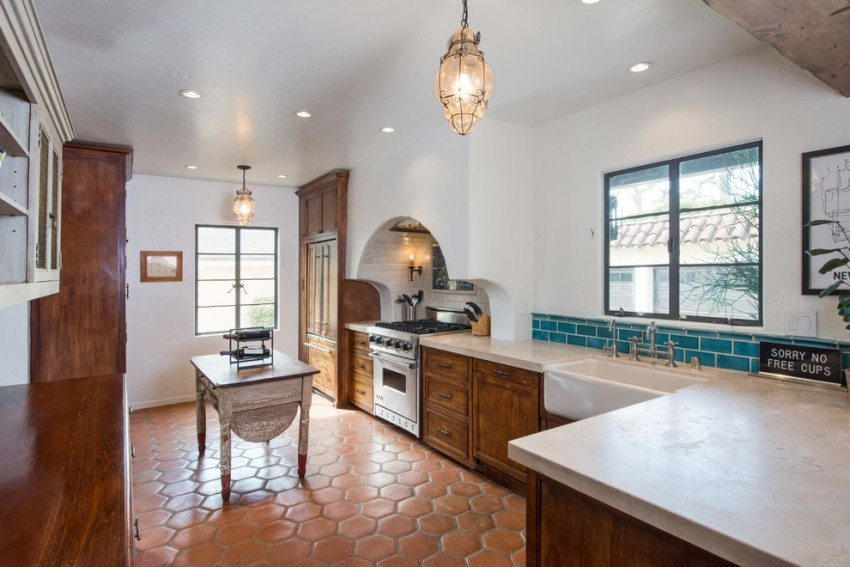
Vintage country style in kitchen design
Also available will be products in the middle price segment from the Polish firms Opoczno and Paradiz (from 700 rubles per m²), Cerrol (from 1000 rubles per m²) Polcolorit and Tubarzin (from 1700 rubles per m²). Here we should also mention the Chinese tile factories Bertini Mosaic, Color Viva, Bars Cristal Mosaik, Fiorano, Dong Peng, Primacolor and many others from 500 rubles per m².
Despite the relatively low price, the products of these manufacturers meet the requirements of international quality standards. It is not inferior in appearance to the design solutions of more expensive options from Spain, Italy, Germany. Cheap floor tiles do not mean substandard.
With great financial opportunities, it is permissible to decorate the floor in the kitchen with tiles and more expensive. Then you should pay attention to such manufacturers as Absolut Keramika, Aparici, Azteca (Spain); Alta Ceramika, Ctrasarda, Magorica FAP Ceramice (Italy); Love Ceramic Tiles (Portugal). Their prices start from 1200 rubles / m² for the simplest tiles. The upper limit will only be determined by your wallet.
Separately, I would like to say about the manufacturers and prices of porcelain stoneware and quartz-vinyl coatings. To avoid counterfeiting, it is worth buying tiles from these materials from trusted manufacturers. In the post-Soviet space, such Russian companies as Estima, Atlas Concorde, Ural Granite, Italon are engaged in the production of porcelain stoneware. Their products are of high quality and affordable. For example, in Russia, floor porcelain tiles 45x45 (photos of samples are presented in the manufacturers' catalogs) will cost you from 600 rubles per square meter.
From foreign manufacturers, one can note ceramic granite from the Italian brands Delconca, Sintesi, Pastorelli (cost from 2350 rubles per m²), and Chinese Sal Sapiente, Fiorano (approximately be guided by the price from 1800 rubles / m²).
Quartz vinyl flooring supplies are made from Belgian, Chinese, German, Swiss manufacturers. A square meter of such flooring from the Belgian manufacturers Fine Floor, Contesse NV, Vinilam, Vinipol will cost from 1700 rubles / m². Floor tiles from Chinese brands Alpine Floor, Art Tile, Decoria, Nox Eco Click (from 1300 rubles per m² and more) are slightly cheaper. The choice of Swiss vinyl from Pergo and Progress (from 2500 rubles per m²) will be expensive.
As you can see, today the choice of tile flooring for the kitchen is quite large. Dozens of manufacturers, thousands of proposals for structure, millions of shades, patterns, textures and styles. In this variety, everyone can choose an affordable tile for the kitchen floor, which will serve for many years and give a good mood during a quick morning snack or a traditional dinner with the family.
